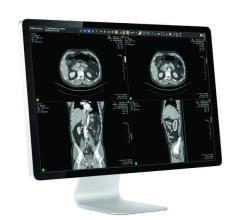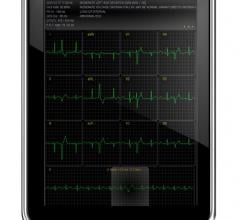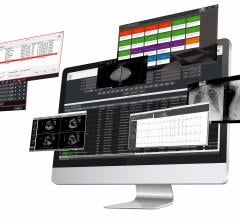October 4, 2007 – The Cleveland Clinic announced Oct. 3 its Top 10 Medical Innovations list, highlighting technologies which will likely have a big impact on healthcare in 2008, including therapies for valvular heart disease, unusually high cholesterol and severe neurologic disorders.
The list of breakthrough devices and therapies was selected by a panel of Cleveland Clinic physicians and scientists and was unveiled during Cleveland Clinic’s 2007 Medical Innovation Summit, which is currently underway.
“These innovations represent exciting technologies which may have a major impact in clinical practice in the near future,” said Tomislav Mihaljevic, M.D., who chaired the Top 10 Medical Innovations List. “We believe this list represents the best, innovative approaches in healthcare today affecting some of the most prevalent diseases affecting millions of patients world-wide.”
The Top 10 Medical Innovations for 2008 are:
10. Dual energy source computed tomography (CT) imaging: The dual source CT features two X-ray sources and two radiation detectors which allow for imaging of patients more quickly and with less radiation. The speed at which the dual-source scanner operates allows physicians image patients with high or irregular heart rates, which used to be significant limitation of this technology.
9. Engineered cartilage products for joint repair: The use of biologic and engineering principles to design natural biomaterials that are used to replace joint cartilage tissue that is damaged from injury or arthritis. The materials are surgically implanted into the joint with the intent to restore the damaged cartilage and avoid artificial joint replacement.
8. Implanted device allowing neural control of objects by the severely disabled: Novel communication interfaces are being developed to provide the ability to control devices and to potentially restore limb movements to individuals with spinal cord injuries, stroke, ALS, as well as other central nervous system injuries. This interface system is designed to restore functionality for severely motor-impaired individuals.
7. Image fusion for diagnostic and therapeutic use: Used to diagnose medical problems, both anatomic and physiologic in nature, as well as to assist minimally invasive procedures, such as stent placement or tumor ablation.
6. Live attenuated influenza vaccine for children as young as six months: Nasal drops containing live attenuated flu can be used as a vaccine in lieu of needles, and provide effective protection from influenza for this high-risk population.
5. New oral anticoagulant drugs for treating and prevent thrombosis: Newer anticoagulant treatments, which include low molecular weight heparins, are being introduced with the goal of curbing complications such as bleeding and thrombosis.
4. Convergence of advances in genome scanning and informatics to support clinical applications: Genetic testing that can be used to develop personalized risk assessments and disease management plans for variety of genetically caused diseases.
3. RNA-based therapeutics: This particular innovation uses RNA antisense technology to treat patients who are unable to reach their targeted cholesterol levels with statins alone or who are statin intolerant. The therapy is intended to reduce the production of ApoB-100, a protein that carries certain forms of cholesterol and triglycerides in the bloodstream.
2. Percutaneous aortic heart valves: For high-risk patients, a technique has been developed which involves inserting a new balloon expandable wire mesh valve with internal valve leaflets. The valve is inserted through a groin or small chest wall incision and then fed up through a catheter into position with X-ray screening and the balloon inflated to secure the new valve.
1. Flexible intralumenal robotics: A novel catheter-based technology that allows precise remote manipulations within the intra-luminal space with precision and reproducibility, which would surpass human capabilities. This technology is likely to have applications in urology, cardiology, cardiac surgery and other specialties.
“Cleveland Clinic scientists and clinicians are engaged in a continuous dialogue about how to provide patients with the best possible care,” said Christopher Coburn, executive director of CCF Innovations, Cleveland Clinic’s technology commercialization arm. “Their constant interaction, combined with the clinic’s role as a site of basic science and as an end user of medical products, provides a unique perspective for evaluating what will be the novel and next generation therapeutics and products.”
Four major criteria served as the basis for qualifying and selecting the Top 10 Medical Innovations. Nominated innovations were required to have significant potential for short-term clinical impact. It must have a high probability of success, be on the market or close to being introduced, and have sufficient data available to support its nomination.
For more information: www.clevelandclinic.org/innovations/summit/default.htm.


 March 06, 2024
March 06, 2024 



